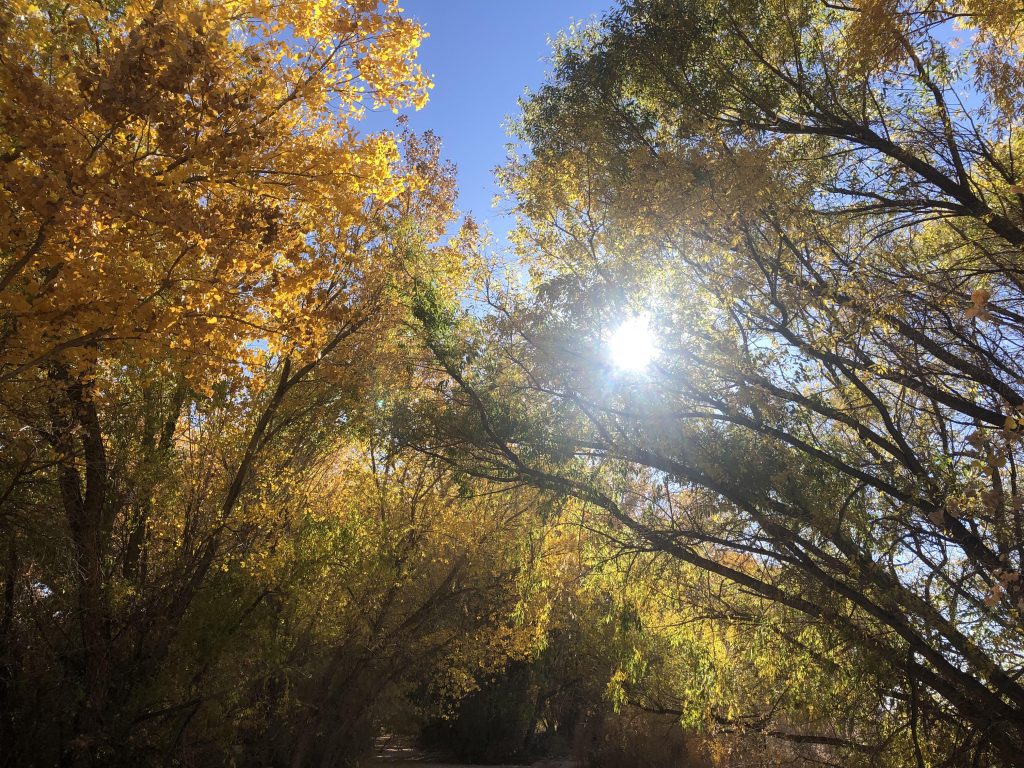The City of Santa Fe and Santa Fe County are proposing to construct and operate a pipeline that will significantly change how and where water flows in the lower Santa Fe River with the potential to harm downstream communities and the environment. This project is aimed at reusing water diverted through the San Juan-Chama Project by sending the return flows (2,200 acre-feet of water) that now flow down the lower Santa Fe River into the Rio Grande instead. An acre foot is the amount of water it would take to cover one acre with a foot of water.
The proposal triggers a federal environmental review under the National Environmental Policy Act (NEPA) because the San-Juan Chama Project is managed by the Bureau of Reclamation. The NEPA process requires Reclamation to evaluate potential impacts to the environment. There are two routes the NEPA process can take to evaluate impacts, an Environmental Assessment (EA), which is a brief discussion of the purpose and need for the proposed action, alternatives, environmental impacts, and a listing of agencies and persons to be consulted. If the action is deemed to significantly affect the environment, a more detailed and rigorous Environmental Impact Statement (EIS) is required. Currently, Reclamation is conducting its initial public outreach (or scoping process) to determine the issues and parameters of its review before the agency prepares an EA, a less robust review of potential impacts.
Reclamation has a responsibility to ensure that all adverse effects of the proposed project are adequately considered. The agency has begun a 30-day public scoping period to accept comments and questions from the community and other interested parties.
Please use the talking points below to help craft your comments. Comments must be submitted by 5pm on November 19 by email to SJCReturnFlowProject@empsi.com or by mail to Bureau of Reclamation, c/o EMPSi, 54 ½ Lincoln St., Santa Fe, NM 87501.
- The project will significantly change the timing and amount of flows in the lower Santa Fe River. It is believed flows could be reduced by half. This fact alone warrants Reclamation take a deeper look into potential impacts by completing a comprehensive Environmental Impact Statement.
- The impacts of the proposed project to water quality on both the Rio Grande and the lower Santa Fe River must be evaluated is likely significant and requires analysis in an EIS.
- The water the City and the County intends to reroute to the Rio Grande is vital to the lower Santa Fe River and plant, wildlife, and human communities all rely on this water.
- The lower Santa Fe River is vital to native species like the Rio Grande sucker, an imperiled fish that Guardians has worked to see federally protected under the Endangered Species Act, and the Northern leopard frog. A full analysis of the effects to these species must be included in any EA and likely also warrants a full EIS be prepared.
- The project area and impacted region is within the range of federally protected species like the yellow-billed cuckoo and Southwestern willow flycatcher. Reclamation must consult with the U.S. Fish and Wildlife Service to ensure the proposal will not harm listed species or their designated critical habitat.
- Hydrogeological assessments must be conducted as part of an EIS to learn more about the surface-groundwater interactions in the project area and ensure depriving the lower Santa Fe River of this surface water will not jeopardize aquifer levels.
- In 2012, the City of Santa Fe passed a Living River Ordinance with the intent of mimicking natural hydrologic cycles in the Santa Fe River and ensuring minimum target flows in the river. Reclamation must honor this local ordinance and evaluate the impacts this proposal will have on maintaining the outlined target flows.
- Reclamation, as a federal agency with a trust obligation to tribes and pueblos along the Rio Grande and Santa Fe River, has a duty to meaningfully consult with all impacted tribal and pueblo communities, including at a minimum the six middle Rio Grande pueblos. This government-to-government consultation is separate from and in addition to the environmental review process under NEPA. To our knowledge, this has yet to happen.
- Climate change is significantly reducing flows in the Rio Grande Basin, including in the Santa Fe River Watershed. The cumulative impacts of how climate change will impact this river in combination with the effects of this project must be detailed and considered in an EIS.
The public scoping period is meant to gather known issues or concerns with the project or its potential effects but also to identify questions that must be answered as part of the environmental review process. Including any questions you may have about the project itself, the permitting process (including permitting through the Office of the State Engineer), existing data (e.g., hydrologic modeling or flow data), or the affected area is a helpful way to participate in the process.
Please be sure to submit your comments by 5pm on November 19 by email to SJCReturnFlowProject@empsi.com or by mail to Bureau of Reclamation, c/o EMPSi, 54 ½ Lincoln St., Santa Fe, NM 87501. If you have questions or would like additional tips on how to structure your comments, please contact me at tsnyder@wildearthguardians.org or 505-396-1752.
Like what you just read? Sign up for our E-news. Want to do more? Visit our Action Center.
